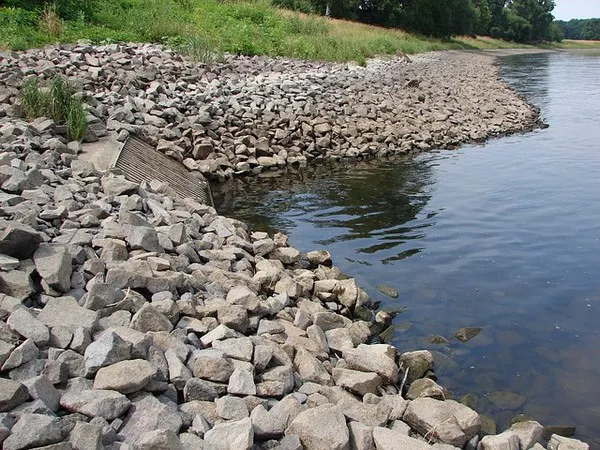Wastewater, a byproduct of various human activities, is a complex mixture of water and pollutants. This article delves into the definition, sources, and composition of wastewater, as well as the importance of its treatment and management.
Understanding Wastewater
Wastewater is any water that has been adversely affected in quality by human influence. It encompasses a broad range of contaminants, including chemical, physical, and biological impurities. The primary sources of wastewater are domestic, industrial, agricultural, and stormwater runoff. Each source contributes unique pollutants, necessitating diverse treatment approaches to mitigate environmental and health impacts.
Sources of Wastewater
1. Domestic Wastewater
Domestic wastewater, also known as sewage, is generated from households and residential areas. It comprises two main components: blackwater and greywater.
Blackwater: This includes water from toilets, which contains fecal matter and urine, rich in organic matter and pathogens.
Greywater: This originates from showers, sinks, washing machines, and dishwashers. While it contains fewer pathogens compared to blackwater, greywater still has significant amounts of detergents, fats, oils, and other household chemicals.
2. Industrial Wastewater
Industrial activities produce wastewater containing a wide range of pollutants, depending on the type of industry. Common sources include:
Manufacturing: Industries like textiles, chemicals, paper, and food processing generate wastewater loaded with organic and inorganic substances, including heavy metals, dyes, solvents, and toxic chemicals.
Mining: Mining operations produce wastewater with high concentrations of metals, acids, and sediments.
Energy Production: Power plants and refineries contribute wastewater containing thermal pollution, heavy metals, and chemical additives used in cooling and cleaning processes.
3. Agricultural Wastewater
Agricultural runoff is a significant source of wastewater, particularly in areas with intensive farming practices. It includes:
Irrigation Return Flows: Water used for irrigation can pick up pesticides, fertilizers, and soil sediments, which then enter water bodies.
Animal Husbandry: Waste from livestock operations contains high levels of nutrients (nitrogen and phosphorus), organic matter, and pathogens.
4. Stormwater Runoff
Stormwater runoff occurs when precipitation flows over land surfaces, picking up pollutants from urban, suburban, and rural areas. Common contaminants include:
Sediments: Erosion and construction activities contribute to high sediment loads in stormwater.
Chemicals: Pesticides, herbicides, and other chemicals from agricultural and urban landscapes are often present.
Heavy Metals: Runoff from roads and industrial sites can carry metals like lead, copper, and zinc.
Composition of Wastewater
The composition of wastewater is highly variable and depends on its source. However, typical constituents include:
Organic Matter: Decomposable organic material from human waste, food waste, and plant debris.
Nutrients: Nitrogen and phosphorus compounds that can lead to eutrophication of water bodies.
Pathogens: Bacteria, viruses, and parasites from human and animal waste.
Heavy Metals: Metals such as lead, mercury, cadmium, and arsenic, which are toxic even at low concentrations.
Suspended Solids: Particulate matter that can settle out or remain suspended in water.
Chemical Contaminants: A variety of synthetic chemicals including pharmaceuticals, personal care products, and industrial chemicals.
Importance of Wastewater Treatment
The treatment of wastewater is crucial for several reasons:
Public Health: Untreated wastewater can harbor pathogens that pose serious health risks, including gastrointestinal diseases and infections.
Environmental Protection: Wastewater can contaminate rivers, lakes, and oceans, leading to ecosystem degradation, loss of biodiversity, and pollution of drinking water sources.
Resource Recovery: Modern wastewater treatment processes can recover valuable resources such as nutrients, energy, and water for reuse.
Regulatory Compliance: Governments impose regulations on wastewater discharges to protect public health and the environment, necessitating effective treatment systems.
Wastewater Treatment Processes
Wastewater treatment involves several stages to remove contaminants and produce treated effluent that can be safely discharged or reused. The main stages include:
1. Preliminary Treatment
This initial stage removes large debris and solids through screening and grit removal. It prevents damage to subsequent treatment processes and equipment.
2. Primary Treatment
In primary treatment, wastewater is allowed to settle in large tanks, where heavy solids settle to the bottom as sludge, and lighter materials float to the surface for removal. This process reduces the load of suspended solids and organic matter.
3. Secondary Treatment
Secondary treatment employs biological processes to degrade organic matter. Common methods include:
- Activated Sludge Process: Microorganisms are used to consume organic matter in aerated tanks.
- Trickling Filters: Wastewater passes over a bed of media where microorganisms form a biofilm to degrade pollutants.
- Lagoons: Wastewater is treated in large, shallow ponds through natural microbial processes.
4. Tertiary Treatment
Tertiary treatment provides additional purification to remove residual contaminants. Techniques include:
Filtration: Removes fine particulates using sand or membrane filters.
Disinfection: Kills pathogens using chlorine, ozone, or ultraviolet light.
Nutrient Removal: Processes like biological nutrient removal (BNR) target nitrogen and phosphorus reduction.
Innovative Wastewater Treatment Technologies
Advancements in wastewater treatment technology aim to enhance efficiency, reduce costs, and recover resources. Notable innovations include:
- Membrane Bioreactors (MBRs): Combine biological treatment with membrane filtration for high-quality effluent.
- Anaerobic Digestion: Converts organic matter into biogas (methane) for energy production.
- Constructed Wetlands: Use natural vegetation and microbial processes to treat wastewater in a sustainable manner.
- Advanced Oxidation Processes (AOPs): Employ chemical oxidation to degrade persistent organic pollutants.
Challenges in Wastewater Management
Despite technological advancements, wastewater management faces several challenges:
Infrastructure: Aging infrastructure in many regions requires significant investment for upgrades and expansion.
Climate Change: Increased frequency of extreme weather events can overwhelm wastewater systems and lead to pollution.
Emerging Contaminants: Pharmaceuticals, microplastics, and other emerging contaminants pose new treatment challenges.
Funding and Governance: Effective wastewater management requires adequate funding, regulatory frameworks, and stakeholder collaboration.
See Also The Chemicals Used in Wastewater Treatment
Conclusion
Wastewater is an inevitable byproduct of human activity, encompassing a complex mixture of pollutants from various sources. Understanding its composition, sources, and the importance of treatment is essential for protecting public health and the environment. Through effective wastewater treatment and innovative technologies, we can mitigate the adverse impacts of wastewater and harness it as a resource for sustainable development. As challenges in wastewater management continue to evolve, ongoing research, investment, and policy support will be crucial to ensuring a cleaner and healthier future.

